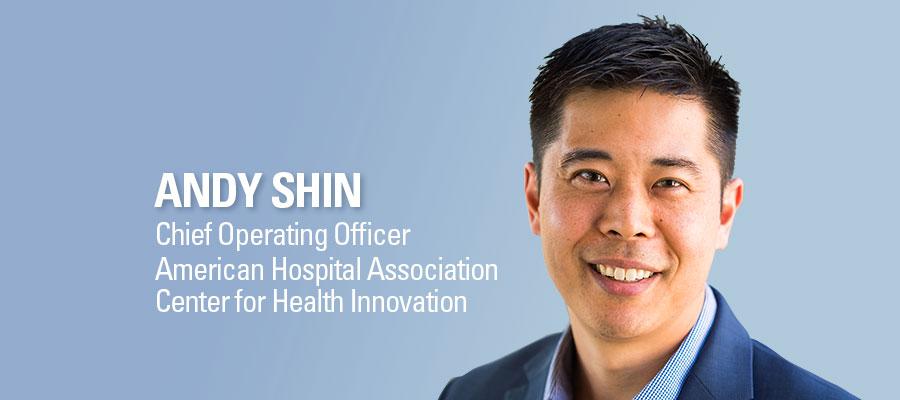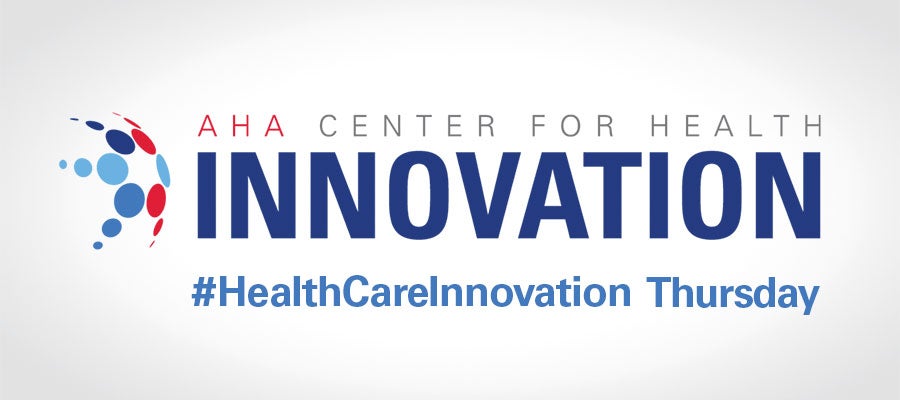3 Leadership Capabilities That Will Drive Health Care Transformation after COVID-19

 Leadership in the midst of the COVID-19 pandemic has had many faces — organizationally, in the community, at the bedside. During any crisis, leaders learn and adapt on their feet. But when there’s time to reflect, leaders learn even more about decisions that worked and those that didn’t, and about what capabilities they will need to harness in an “after-COVID” world.
Leadership in the midst of the COVID-19 pandemic has had many faces — organizationally, in the community, at the bedside. During any crisis, leaders learn and adapt on their feet. But when there’s time to reflect, leaders learn even more about decisions that worked and those that didn’t, and about what capabilities they will need to harness in an “after-COVID” world.
This context inspired me to speak with leaders from AHA member hospitals and health systems about how the past seven months have informed their leadership signature. While much was discussed, with moments of sometimes intense introspection, three leadership capabilities consistently rose to the top. These capabilities can serve as our North Star as we look to rebuild and reimagine our health care system after COVID-19.
1. Challenge Orthodoxies with a Beginner’s Mind
In speaking with many health care leaders over the past few months, one common perception is that the environment in which we operate has changed in key areas. Adopting virtual and digital modalities, focusing on consumer preferences and reexamining the financial context are just a few. Yet for many established leaders, the practice of “unknowing” long-held assumptions and best practices can run counter to the very attributes responsible for advancing them into health care leadership positions in the first place.
How do we acknowledge when the rules of the game have changed and the “right answer” becomes an anchor instead of a sail? One approach is to challenge orthodoxies with what MIT leadership and innovation researcher Hal Gregersen describes as a "beginner's mind — constantly seeing the world with fresh eyes.”
Early in the pandemic, it became clear that Providence would not have enough personal protective equipment (PPE). Amy Compton-Phillips, M.D., executive vice president and chief clinical officer, remembered the feeling of failure trying to secure needed PPE. In what she describes as a moment of “desperation,” one of her team members volunteered to go to a local fabric store and sew homemade masks. “What was the darkest moment turned into our brightest moment, and it just reaffirmed my faith in humanity,” she recalled.
Instead of continuing to source PPE from established channels, her team piled into an office on a weekend to assemble cloth masks. From this simple approach came the opportunity to reexamine “who else could make PPE?” and “could the clinical and materials expertise within the health system be leveraged to partner with different kinds of manufacturers?” These questions led to the first “novel PPE manufacturer” partnership with a local furniture company, eventually producing tens of thousands of PPE units for Providence and launching the national 100 Million Mask Challenge.
This unconventional approach required an ability to challenge long-held assumptions about where and how to solve this problem, in part through the inspiration of individuals outside of traditional supply chain roles who just “needed to help somehow.” Still, Dr. Compton-Philips describes this capability as critical beyond just a crises situation: “In health care, we need to do more forgetting of why we can’t do something and just try it, test it, fail and build again.”
2. Cultivate Trust with the Communities We Serve
A recent report by Deloitte found trust to be associated with stronger economic growth, increased innovation, greater stability and better health outcomes. Amid COVID-19, trust is at the heart of consumer confidence and public health. The Deloitte researchers found that for organizations to become trustworthy, they must cultivate trust through intent and competence. Additionally, in what has also been referred to as the second pandemic — the amplification of health care disparities along racial and ethnic lines — the issue of trust has become an even greater imperative.
When Shereef Elnahal, M.D., first assumed the CEO role at University Hospital in Newark, N.J., he knew that his top priority was earning the trust of his community. In the wake of riots in the 1960s, University Hospital was a central piece of the Newark Accords, an agreement with majority African- American residents that University Hospital would give back to the community that was displaced by its original construction and subsequent development.
“People want institutions like hospitals to succeed and serve their community,” Dr. Elnahal observed. "A thriving hospital for any community is a good thing. When I got here, I decided to make building trust my most important priority as a leader. So I reached out and met with members of the community to have candid conversations about our intentions.”
Dr. Elnahal keeps a copy of the Newark Accords on his desk as a physical reminder of “why we are here and to ground us.” Ultimately, he sees the trust that University Hospital cultivated as having been instrumental to correct misinformation spread during the pandemic, as he expects it will be when a vaccine becomes available, for example.
After establishing clear intentions, the hard part is delivering on promises through competence.
Alisahah Cole, M.D., system vice president of population health at CommonSpirit Health, believes that good follow-through can be supported by meaningful partnerships with community-based organizations that have a “track record of earning and sustaining trust.”
Instead of going it alone, one effective strategy has been to collaborate and “not compete” where multiple hospitals and health systems serve the same community. One Charlotte Health Alliance in North Carolina and West Side United in Chicago are two models of collaboration by health systems that demonstrate a shared commitment to the community and have helped build mutual trust.
3. Foster Inclusiveness and Empathy
Brian Donley, M.D., CEO of Cleveland Clinic London, recalls one of his first leadership experiences as president of a hospital. As a new clinician-turned-administrator, he decided to visit every hospital department to learn about each unit’s roles and responsibilities. He said he will never forget meeting a long-tenured employee working in sterile supply who remarked that if only the phone was moved from one side of the room to the other, it would save time and increase efficiency. This simple fix was within Donley’s power as president, and the employee responded with a deep hug, telling him that “in my 20 years here, no doctor or leader has ever come to talk to me.”
That was when Dr. Donley realized the power of empathy to foster connection to purpose. Since the start of the pandemic, “I’ve gotten to know our team even better. I listen to and understand their fears, dreams and aspirations more during this time, and it’s helped me be a much better and more empathetic leader.”
Empathy, which requires curiosity and humility, is closely associated with inclusiveness. In an after-COVID world, inclusiveness arguably will be the enabler that feeds creativity for new solutions and also enhances our commitment to the communities we serve. Many studies have shown that innovation is correlated with the diversity of our work teams and the inclusiveness of teams, expanding experiences and perspectives that vary across gender, age, race, ethnicity and more.
Being inclusive, however, means more than just having diversity at the table. Leaders must be able to foster trust and safety among all individuals and teams. When Dr. Cole moved to a new health system in the summer during the height of the pandemic, she described her intentional efforts to allow for vulnerability: She said it was “eye opening to be more vulnerable with myself as a leader and to hear what others are dealing with. Being more comfortable with being vulnerable has brought us together quicker, and we’re more cohesive than what probably would have happened without it.”
The capability to be inclusive faces additional challenges at the top of many organizations, including governance and executive leadership. At Cleveland Clinic London, Dr. Donley has instituted a “reverse mentoring” program: Every executive team member is mentored by an individual from an underrepresented minority employee resource group. For at least every two weeks over three months, the executive team mentees listen and learn about racial injustice so they can be better diverse and inclusive leaders.
One common and compelling insight many health care leaders shared is that inclusive leadership is not necessarily an innate personal quality. Inclusiveness can be fostered, improved and even mastered, but it must be prioritized and practiced as such. As Dr. Cole asks, “Now that you are woke, how will you stay awake?”
Leadership as a Capability
In nearly every one of my interviews, health care leaders described “capabilities,” versus qualities or intrinsic attributes that you are either born with or not. Capabilities can be learned and, most importantly, they are gained through practice and implementation.
These three capabilities represent a departure from the norm or, at the very least, a stark reminder of the importance of practicing leadership in a way that empowers others and tests long-held assumptions. COVID-19 has amplified many things, including the need for and impact of leadership. For our field, prioritizing certain leadership capabilities will enable the transformation we seek, where all individuals reach their highest potential for health.
Andy Shin is chief operating officer of the AHA Center for Health Innovation.

